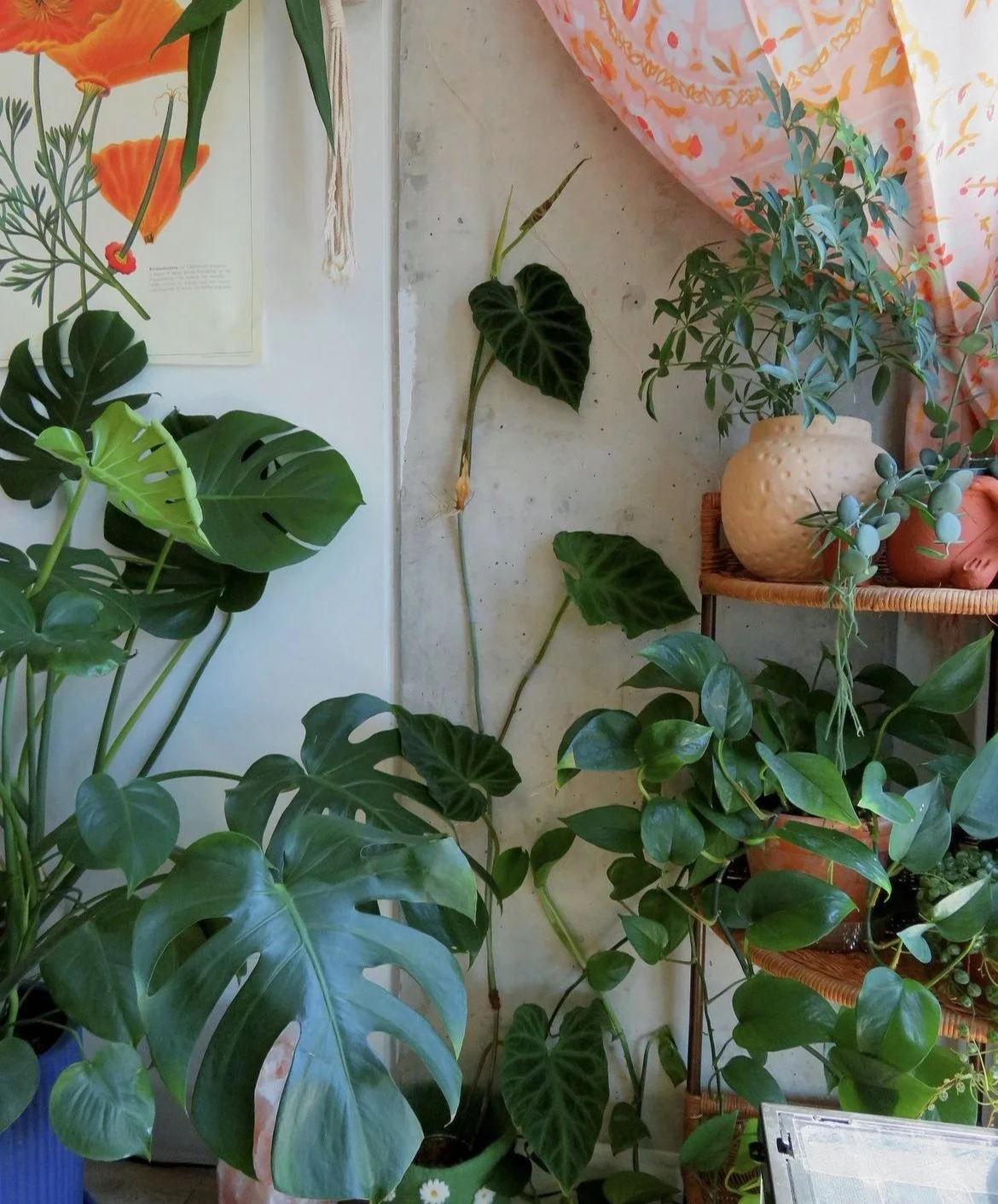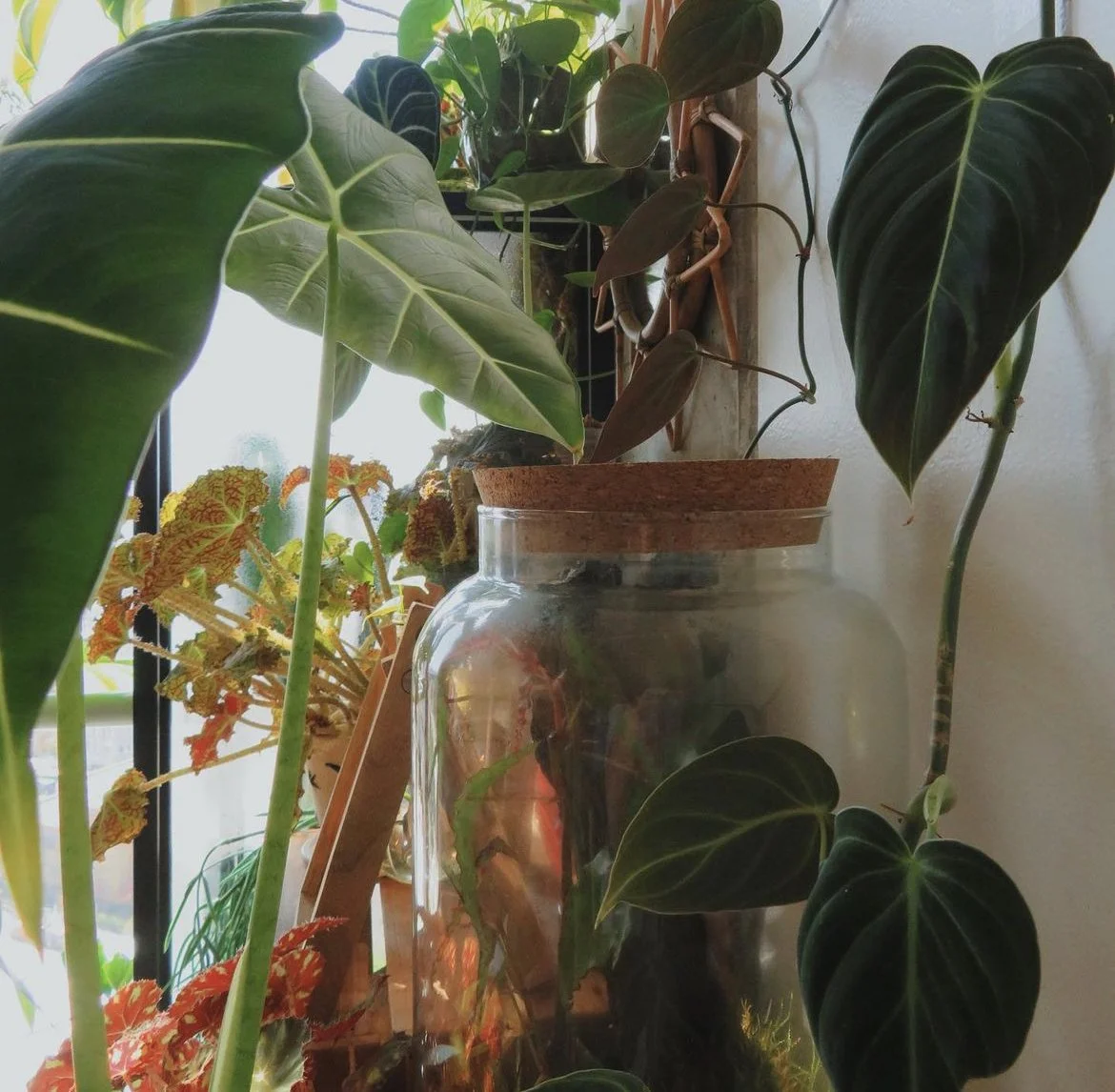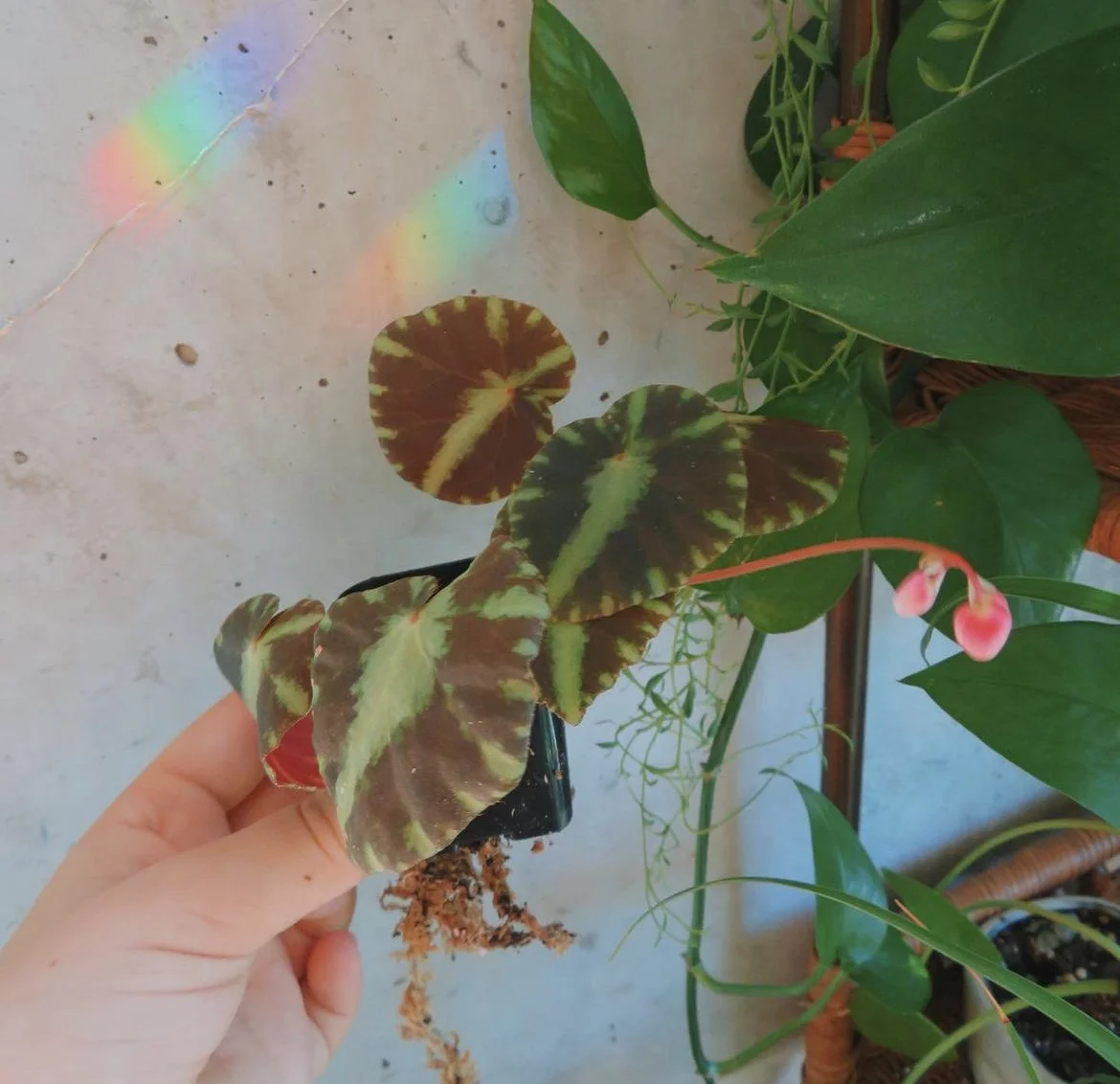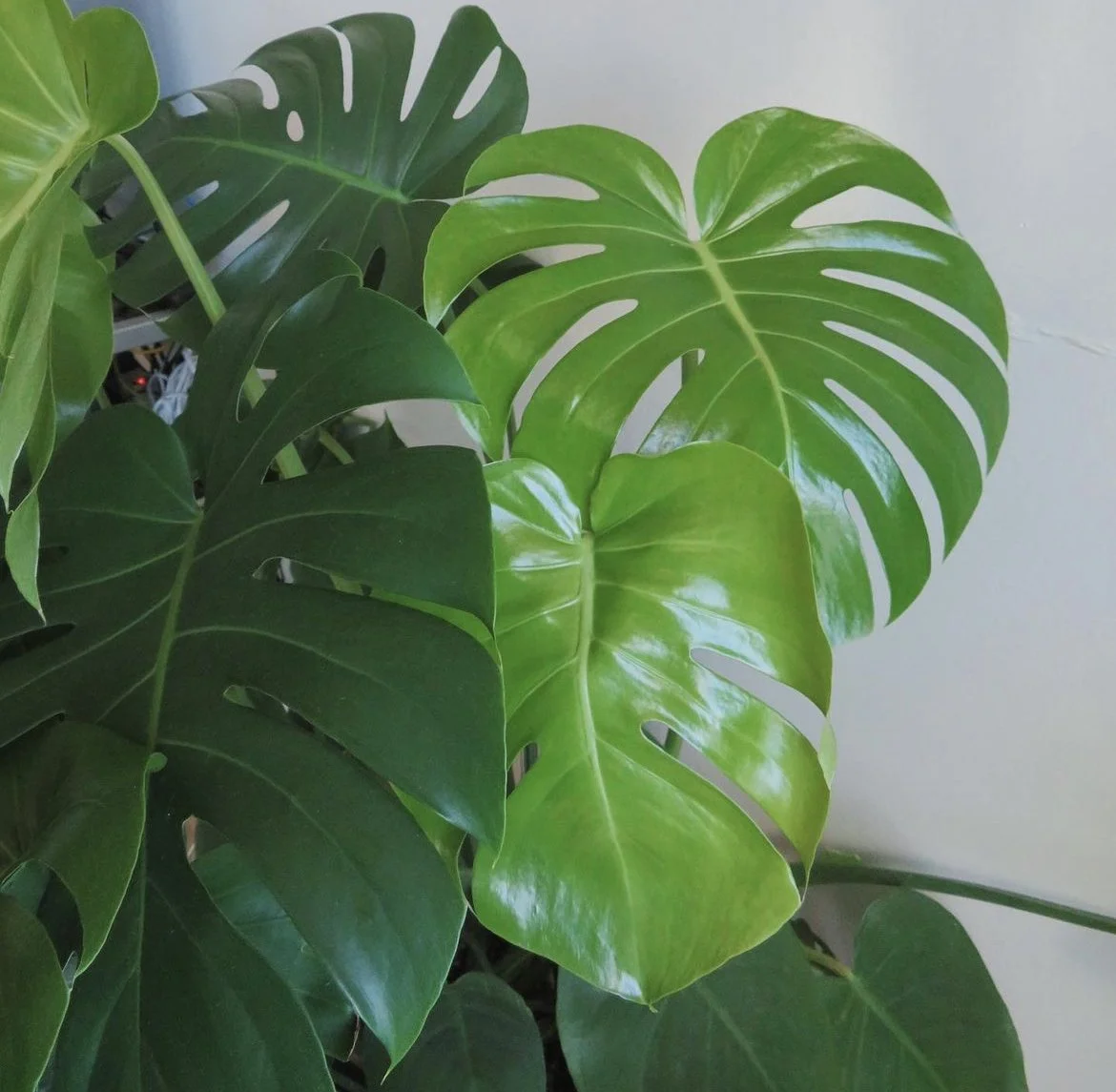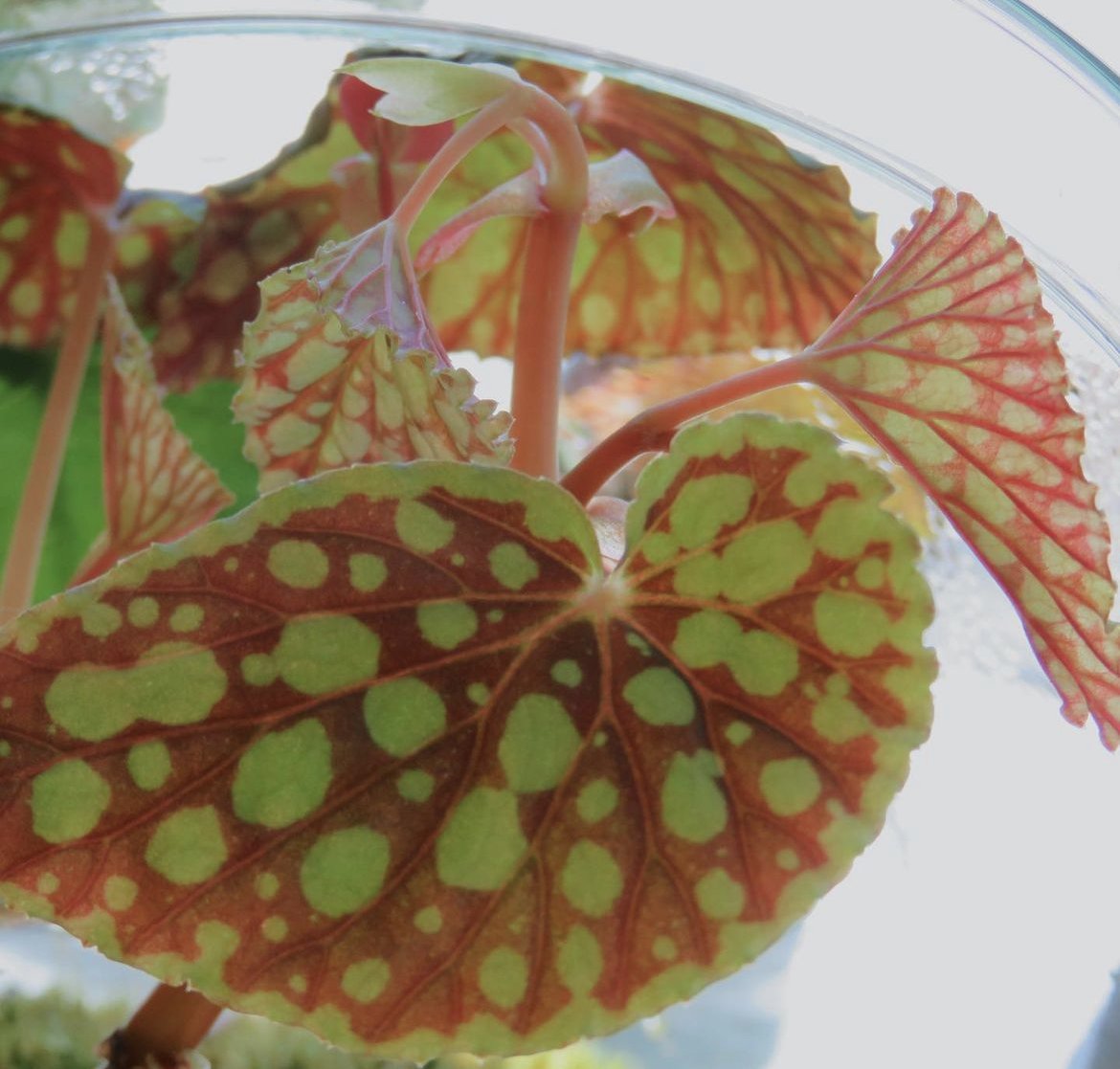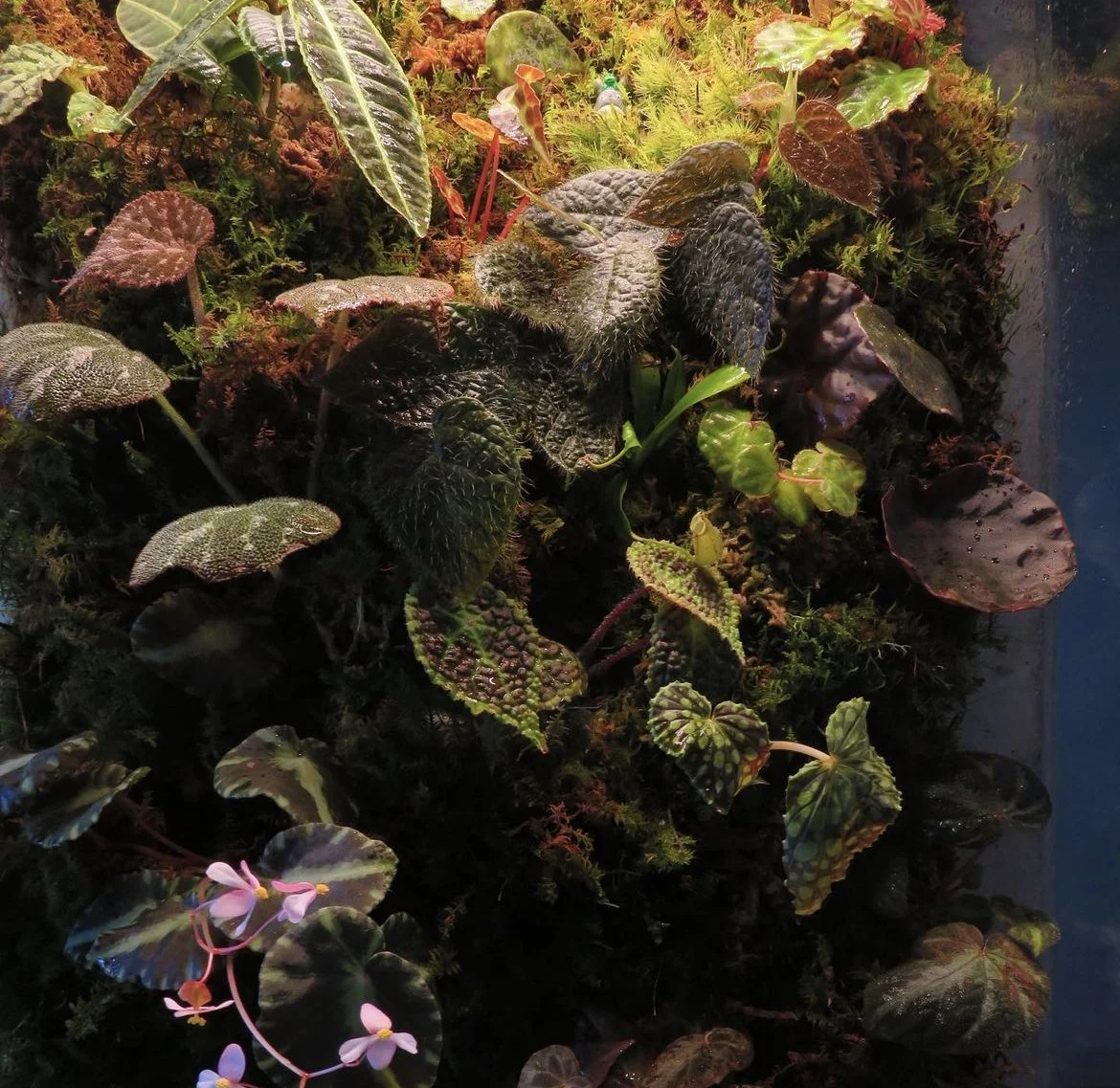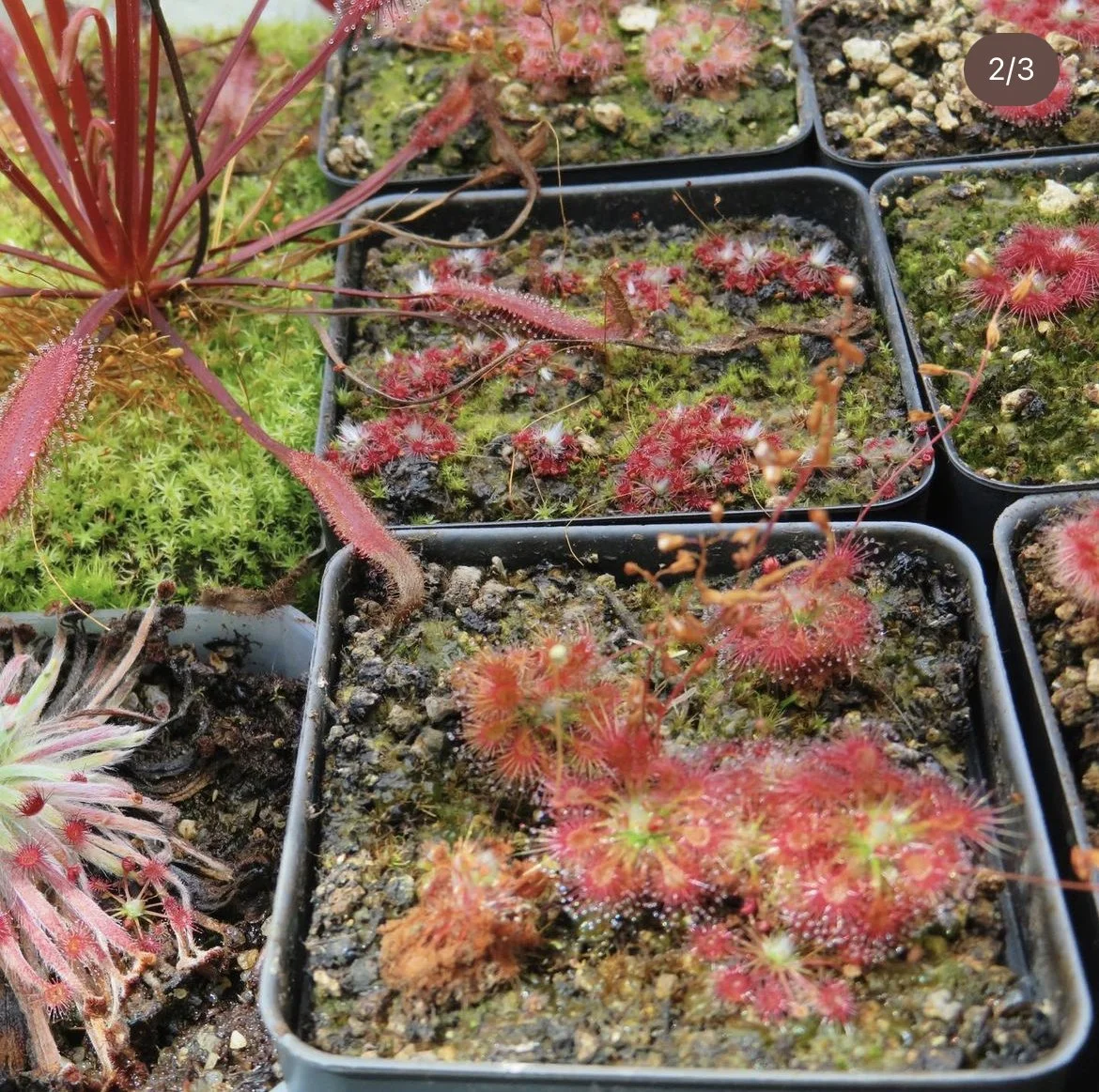Mom, There's a Garden in my Living Room…
Written by: Holly Cambareri
Gaze into the lush, dreamy land of orchids and begonias. Drexel student Grace Carter shares tips and tricks to ensure plants thrive in any environment.
I consider myself a chronic plant killer. I buy a plant with the best intentions and care for it religiously for a few weeks, checking on sun exposure and water intake. Yet every single time, it slowly fades to the back of my mind until I look over one day and realize the poor plant has died an unceremonious death. Seriously, I killed succulents that only required watering once a month. So, you can imagine my bewildered amazement when I found out last year that my soon-to-be roommate was bringing an entire car full of plants to our new apartment. Over a year later, I don’t kill plants anymore, and my apartment contains hundreds of thriving living plants.
Drexel student Grace Carter started her impressive plant collection in 2019 while working at a local plant store near her hometown. Carter quickly became interested in the art of horticulture and began collecting plants. She has an impressive assortment of plants, including dozens of begonias and orchids, and travels all over the city selling, buying, and trading with fellow plant lovers and friends.
Carter’s plant sanctuary currently consists of two large greenhouse cabinets, several smaller glass terrariums, and a seemingly infinite number of pots ranging from the size of a thimble to nearly two feet across. Both cabinets feature misting systems on a timer to ensure the plants are hydrated and cared for constantly. In one terrarium, she installed a cooling system to decrease the temperature overnight, as the plants inside thrive in environments with temperature changes. The set-up takes over an entire living room space in our apartment, with plants growing up and down the walls and windows. “I really only water them once a week, and it takes about two hours each time, so it’s not as bad as you might think,” Carter explains, describing a typical week of plant care. “If I notice that any of them are looking dry throughout the week, I’ll water them individually.”
After she began collecting plants, Carter got involved with the American Begonia Society, a society dedicated to cultivating, conserving, and studying begonias. There are hundreds upon hundreds of species of begonias, and she has many in her collection, including two begonia robii – an extremely rare species native to Asia. These are on conservation, meaning there is only one other person in the United States with this plant. She is responsible for sustaining this begonia and sharing them with others in the plant community. The value of one of her begonia robii is over $600.
One of the first questions typically asked when someone steps foot in the apartment: “So, do you name all the plants?” This was also one of my first thoughts, but Carter prefers to refer to the plants by their scientific names, which is understandable due to the sheer size of her collection. The second question people often ask is: “What is your favorite plant?” Her response is: “I really love all begonias; they’re definitely my favorite. I have a begoniarium that’s full of begonia sarawak, daunhitam, rockii, and a bunch more.”
Grace’s story may inspire you to begin your plant journey, but where do you start? Well, lucky you – she has some tried and true tips to share below. Make sure to follow her plant account on Instagram @gracesplantjournal!
How to Not Kill Your House Plants
Ditch the soil
All your previous plant lessons have ingrained in your brain that plants need three things: water, sun, and soil. While the first two are true, plants thrive in semi-hydroponic methods such as pearlite or sphagnum moss which will keep your plants more hydrated than soil ever could. Both soil alternatives are easily found on Amazon or at your local Lowes!
Don’t drown them
Despite what you might think, plants do not need water daily like humans. Watering your plants once a week is all they need! Ensure not to drown the plants in the water, as they only need enough for the moss or pearlite to be saturated. If a massive pool of water forms on the top of your pot, you are drowning it! The recommended amount of water depends on the size of the plant, so start with a few ounces and increase. Larger plants need far more water, so pour it from a watering can for a few seconds and stop when it begins to pool.
Start simple
Beginning a plant journey can be as easy as buying a grocery store orchid that only requires one ice cube a week! Even though succulents tend to be the top choice as the “easiest plant to keep alive,” this often is not the case as people tend to overwater or underwater them. Try a monstera plant!
Let there be light (but not too much)
All plants need sunlight, but putting them directly in front of the window is not always the best place to keep them. Start researching information about your plants to prevent them from frying in the sun or dying in the dark. Some plants thrive in constant light, but others need intermittent sun, so try placing it in a place that gets sunlight only half the day rather than sitting it in the window.
Listen to your plants
Yes, we know that your plants cannot talk. But if you pay enough attention, your plants will tell you what they need. A wilting, dry plant needs more water, while a leaning, faded plant needs more sunlight. Once you know more about your plants, you will know precisely what they need.


